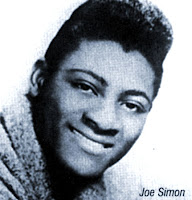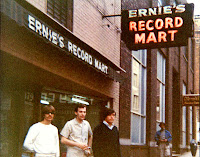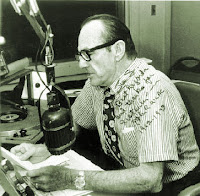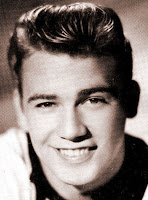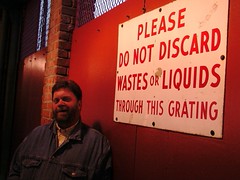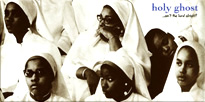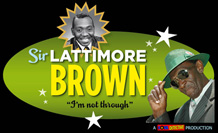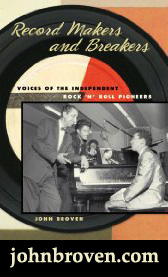Z.Z. Hill - (Home Just Ain't Home At) Suppertime (Atlantic 2659)

(Home Just Ain't Home At) Suppertime
PART FOUR
As part of the team at Sound Stage 7, Bob Wilson had been involved in all aspects of the recording process, including arranging and producing, although the label usually read simply 'Produced by J.R. Enterprises'. That went with the territory.
 After the move to Music City, the individual producer began to receive label credit as well, and there are 45s out there from this period that were produced by Allen Orange, Bergen White, Bob Wilson, Tim Drummond and John R himself. If nothing else, this showed Richbourg's willingness to 'share the wealth', and help out the folks he worked with whenever he could. In all of the research and in all of the conversations I've had with those who knew him, I've never heard anyone say a bad word about him.
After the move to Music City, the individual producer began to receive label credit as well, and there are 45s out there from this period that were produced by Allen Orange, Bergen White, Bob Wilson, Tim Drummond and John R himself. If nothing else, this showed Richbourg's willingness to 'share the wealth', and help out the folks he worked with whenever he could. In all of the research and in all of the conversations I've had with those who knew him, I've never heard anyone say a bad word about him. An important source of income for any studio musician, especially in Nashville, was recording demos - rough versions of songs that a songwriter or publishing company uses to shop their music to artists and record labels. Wilson did his share of this kind of stuff (most memorably with Carl Perkins), and in 1968 he and Karl Himmel recorded a demo with songwriter Steve Davis called Take Time To Know Her, a tune he had written with Percy Sledge in mind. Davis introduced Wilson to Quin Ivy, the Muscle Shoals producer who had created Percy's 'sound'.
An important source of income for any studio musician, especially in Nashville, was recording demos - rough versions of songs that a songwriter or publishing company uses to shop their music to artists and record labels. Wilson did his share of this kind of stuff (most memorably with Carl Perkins), and in 1968 he and Karl Himmel recorded a demo with songwriter Steve Davis called Take Time To Know Her, a tune he had written with Percy Sledge in mind. Davis introduced Wilson to Quin Ivy, the Muscle Shoals producer who had created Percy's 'sound'. Ivy was also a pilot, and flew in to Nashville regularly to do business on 'music row'. He had recently completed work on Quinvy Studios, his own 4 track facilty down in Sheffield, Alabama, and was looking to expand his operation. One thing led to another, and he proposed that Bob Wilson go into business with him, and open a Quinvy branch office in Nashville. Situated on Eighteenth Avenue South, right in the middle of everything, the plan was to gain some more visibility and respect for the Muscle Shoals approach there in the big town. Wilson, who had been a big fan ever since his first Fame sessions with Joe Simon a couple of years earlier, was all for it.
Ivy was also a pilot, and flew in to Nashville regularly to do business on 'music row'. He had recently completed work on Quinvy Studios, his own 4 track facilty down in Sheffield, Alabama, and was looking to expand his operation. One thing led to another, and he proposed that Bob Wilson go into business with him, and open a Quinvy branch office in Nashville. Situated on Eighteenth Avenue South, right in the middle of everything, the plan was to gain some more visibility and respect for the Muscle Shoals approach there in the big town. Wilson, who had been a big fan ever since his first Fame sessions with Joe Simon a couple of years earlier, was all for it. Signing basically the same kind of deal he had with J.R. Enterprises, he became a member of the 'Quinvy Productions' team. Atlantic Records had just signed Z.Z. Hill, and figured he'd be a perfect candidate for Quin Ivy's new plant. Wilson brought Tim Drummond down with him from Nashville and, together with a new 'rhythm section' that Ivy had put together after he and Marlin Greene went their separate ways, they recorded this incredible slab of vinyl we have here today. Released in 1969 (a full 12 years before Down Home Blues), I think it's every bit as good as his later Malaco stuff, if not better. I just love this record, man.
Signing basically the same kind of deal he had with J.R. Enterprises, he became a member of the 'Quinvy Productions' team. Atlantic Records had just signed Z.Z. Hill, and figured he'd be a perfect candidate for Quin Ivy's new plant. Wilson brought Tim Drummond down with him from Nashville and, together with a new 'rhythm section' that Ivy had put together after he and Marlin Greene went their separate ways, they recorded this incredible slab of vinyl we have here today. Released in 1969 (a full 12 years before Down Home Blues), I think it's every bit as good as his later Malaco stuff, if not better. I just love this record, man. When Jerry Wexler heard the tapes, he was impressed, and reportedly told Ivy "that's more like it, that's why we're down here in Muscle Shoals with you." That may well have been the case, but Atlantic had other things going on by then (like Led Zeppelin), and Wexler's opinions notwithstanding, they didn't promote the record and it went nowhere. Wilson had also apparently underestimated the Nashville establishment's disdain of all things 'Shoals', and the branch office wasn't doing much. In any event, Ivy, frustrated by his inability to sell records despite their inherent quality, closed down the whole shooting match in 1970, and went on to become a college professor.
When Jerry Wexler heard the tapes, he was impressed, and reportedly told Ivy "that's more like it, that's why we're down here in Muscle Shoals with you." That may well have been the case, but Atlantic had other things going on by then (like Led Zeppelin), and Wexler's opinions notwithstanding, they didn't promote the record and it went nowhere. Wilson had also apparently underestimated the Nashville establishment's disdain of all things 'Shoals', and the branch office wasn't doing much. In any event, Ivy, frustrated by his inability to sell records despite their inherent quality, closed down the whole shooting match in 1970, and went on to become a college professor. As we all know, those seventies were changing times, and Nashville was no exception. Joe Simon had jumped ship for the more disco oriented Spring Records by 1971 and, almost unthinkably, WLAC had changed its format, forcing our man John R to 'retire' in August of 1973. Although J.R. Enterprises would continue to produce great records on his Seventy Seven and Luna labels, Richbourg's sphere of influence was not quite the same without his fabled radio program. Buttrey and Gayden, who would go on to form Area Code 615 and Barefoot Jerry respectively, began to drift away from recording R&B. After the Dylan stuff, Bob Wilson's presence at Columbia increased, and he began working even more closely with Bob Johnston who, as it turned out, had also worked with Ed Wingate as a record promotion man in New York (small world!).
As we all know, those seventies were changing times, and Nashville was no exception. Joe Simon had jumped ship for the more disco oriented Spring Records by 1971 and, almost unthinkably, WLAC had changed its format, forcing our man John R to 'retire' in August of 1973. Although J.R. Enterprises would continue to produce great records on his Seventy Seven and Luna labels, Richbourg's sphere of influence was not quite the same without his fabled radio program. Buttrey and Gayden, who would go on to form Area Code 615 and Barefoot Jerry respectively, began to drift away from recording R&B. After the Dylan stuff, Bob Wilson's presence at Columbia increased, and he began working even more closely with Bob Johnston who, as it turned out, had also worked with Ed Wingate as a record promotion man in New York (small world!). R&B remained Wilson's first love, however, and he continued to produce great records for Excello (please visit The A Side for more on that), as well as working with folks like Earl Gaines, Ann Sexton, and Willie Hobbs for John R, Hoss Allen and others. He would also become the keyboard player in Freddie King's band at this point, and tour the country just tearing it up with Freddie's brother, the great Benny Turner, on bass.
R&B remained Wilson's first love, however, and he continued to produce great records for Excello (please visit The A Side for more on that), as well as working with folks like Earl Gaines, Ann Sexton, and Willie Hobbs for John R, Hoss Allen and others. He would also become the keyboard player in Freddie King's band at this point, and tour the country just tearing it up with Freddie's brother, the great Benny Turner, on bass. The eighties would find him back home in Detroit, working with Don Davis at his Groovesville productions. Don had developed other interests by then (like owning a bank), and wasn't paying much attention to the music Wilson was producing for the company. Bob moved on to the west coast, where the 'industry' seemed to be concentrated in those days, but times had changed, and he found himself an outsider. Never one to sit still for anything, he kind of reinvented himself, and did what he had to do to get a decent 'day job' to provide for his family, and never look back...
The eighties would find him back home in Detroit, working with Don Davis at his Groovesville productions. Don had developed other interests by then (like owning a bank), and wasn't paying much attention to the music Wilson was producing for the company. Bob moved on to the west coast, where the 'industry' seemed to be concentrated in those days, but times had changed, and he found himself an outsider. Never one to sit still for anything, he kind of reinvented himself, and did what he had to do to get a decent 'day job' to provide for his family, and never look back......until now. You may have asked yourself, dear reader, over the course of the past month, 'what's up with this Bob Wilson fest over here?'
Well, as I mentioned the other day over on soul detective, Wilson contacted me after a post I did about Joe Simon last year. His life story, in my opinion, offered us a priceless window into the inner workings of both Detroit Soul and Nashville R&B. Through hours of telephone conversations, e-mails, and multiple mailings of photographs, vinyl and the like, he's been kind enough to share that story with us.
 After the Stax thing in Memphis last month, I drove over to Nashville to meet him, and let me tell ya, we had us a time! An experience I won't soon forget, I was lucky enough to witness his reunion with old friend Billy Cox, which was just one of the many cool things we did while we were down there (please keep an eye on our ongoing Case Five investigation of Allen Orange over at soul detective for more about that trip of a trip). For right now, I'd just like to say thank you Bob, for everything.
After the Stax thing in Memphis last month, I drove over to Nashville to meet him, and let me tell ya, we had us a time! An experience I won't soon forget, I was lucky enough to witness his reunion with old friend Billy Cox, which was just one of the many cool things we did while we were down there (please keep an eye on our ongoing Case Five investigation of Allen Orange over at soul detective for more about that trip of a trip). For right now, I'd just like to say thank you Bob, for everything.We haven't heard the last from Bob Wilson, trust me...


